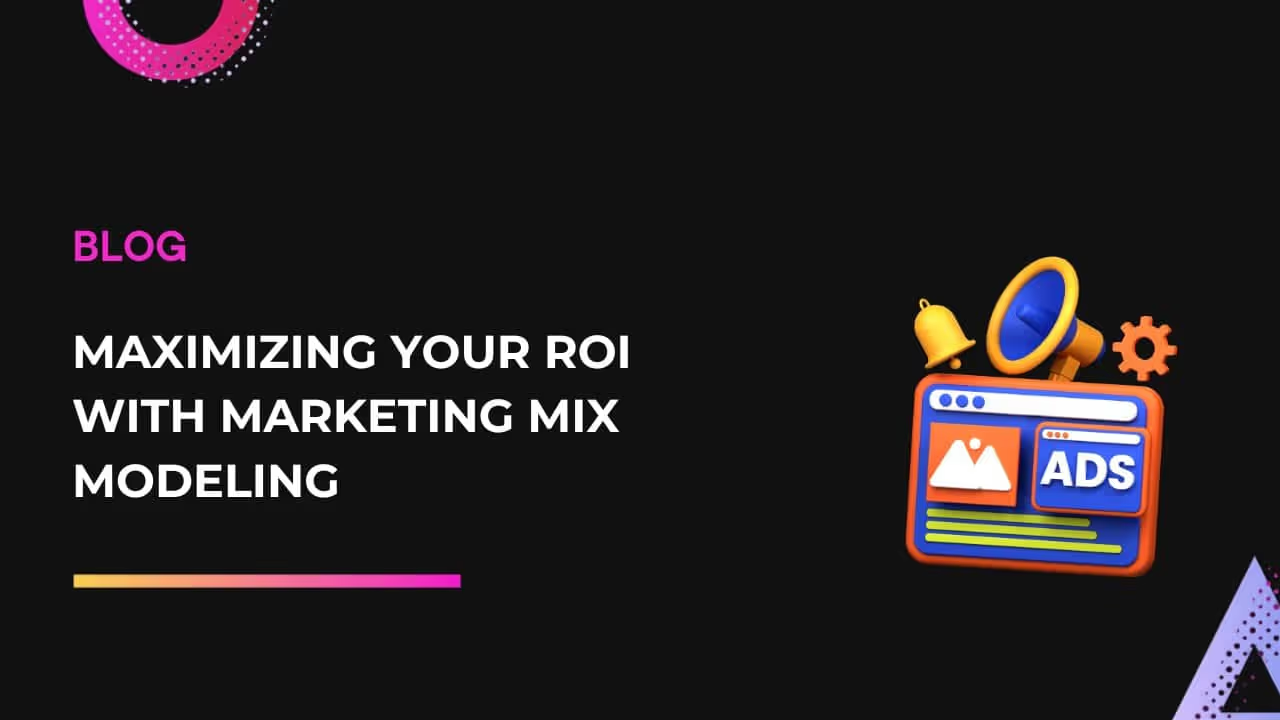Marketing Mix Modeling (MMM) provides an effective solution to the challenge of allocating marketing budgets across multiple platforms. Digital marketers often worry about spending their money effectively, as not all ads deliver the same value. Platforms like Google Paid Search, Facebook, YouTube, and TikTok cater to different audiences and marketing stages, making budget allocation challenging. Allocating more budget to one platform over another can lead to very different results.
Offline advertising, such as TV, radio, and print, adds another layer of complexity because it lacks detailed performance metrics compared to digital advertising. Multi-Touch Attribution (MTA) models, which track consumer journeys, struggle to measure offline channels and are affected by new privacy regulations that limit third-party cookies. This inaccuracy complicates precise budget allocation.
The Marketing Mix Modeling addresses these concerns by using historical data and statistical techniques to measure the effectiveness of both online and offline channels. It helps marketers understand how different marketing activities influence consumer behavior and how to optimize the marketing budget for maximum impact. Poor budget allocation can significantly impact business performance, making MMM a crucial tool for improving decision-making. Therefore, analyzing past performance and understanding the nuances of each channel is crucial. Factors like seasonality, holidays, and promotions add to the complexity, emphasizing the need for effective budget management to optimize results.

The Solution: Marketing Mix Modeling
Marketing Mix Modeling uses machine learning to estimate the contribution of each advertising channel to sales. MMM offers several benefits:
1. Optimizing the Budget: MMM helps allocate your budget effectively across various platforms without increasing your overall spending. By analyzing saturation curves for each platform, you can see the optimal budget allocation to maximize returns.
2. Saturation Curves: It’s important to understand the law of diminishing returns. Saturation curves illustrate how additional spending on a platform yields decreasing returns after a certain point. MMM visualizes these curves, guiding you to allocate your budget more efficiently.
3. Weekly Allocation: Marketing Mix Modeling not only optimizes budget allocation across platforms but also across different weeks. Factors like seasonality and holidays can significantly impact product performance. By considering these variables, MMM ensures optimal weekly budget allocation.
4. What-If Scenarios: MMM allows you to simulate various budget allocation scenarios without actual spending. You can explore questions like the impact of increasing your Google Search budget or reallocating funds between platforms, providing insights without financial risk.
5. Conversion Attribution: Unlike Google Analytics, which may inaccurately attribute conversions, MMM provides a more reliable analysis by considering both online and offline channels. This comprehensive view helps you understand the true impact of each advertising channel.
Conclusion
Using a Marketing Mix Model provides several advantages:
- Ease of Data Acquisition: Aggregated data, such as costs, impressions, clicks, conversions, and sales, are sufficient for MMM analysis.
- Inclusion of Offline Channels: MMM incorporates offline media channels, offering a holistic view of your advertising spend.
- Consideration of Key Factors: Variables like seasonality, holidays, and promotions are factored in, enhancing prediction accuracy.
- Comprehensive Toolkit: MMM helps avoid wasted spending, increases ROI by optimizing budget allocation, enables weekly budget optimization, and allows for cost-free experimentation through "what-if" scenarios.

Looking to enhance your marketing strategy? Unlock the potential of Morpheus, Dataslayer’s innovative Marketing Mix Modeling (MMM) platform. Morpheus offers a powerful yet easy-to-use solution for evaluating and optimizing your marketing efforts, providing you with valuable insights to make informed, data-driven decisions.
In addition, Dataslayer simplifies data collection by integrating information from various sources directly into Google Sheets, Looker Studio, and other platforms. This seamless process ensures accurate and efficient marketing data analysis, allowing you to focus on refining your marketing mix for better outcomes.
Contact us today to learn how Morpheus and Dataslayer can streamline your MMM journey and help improve your business strategy.







